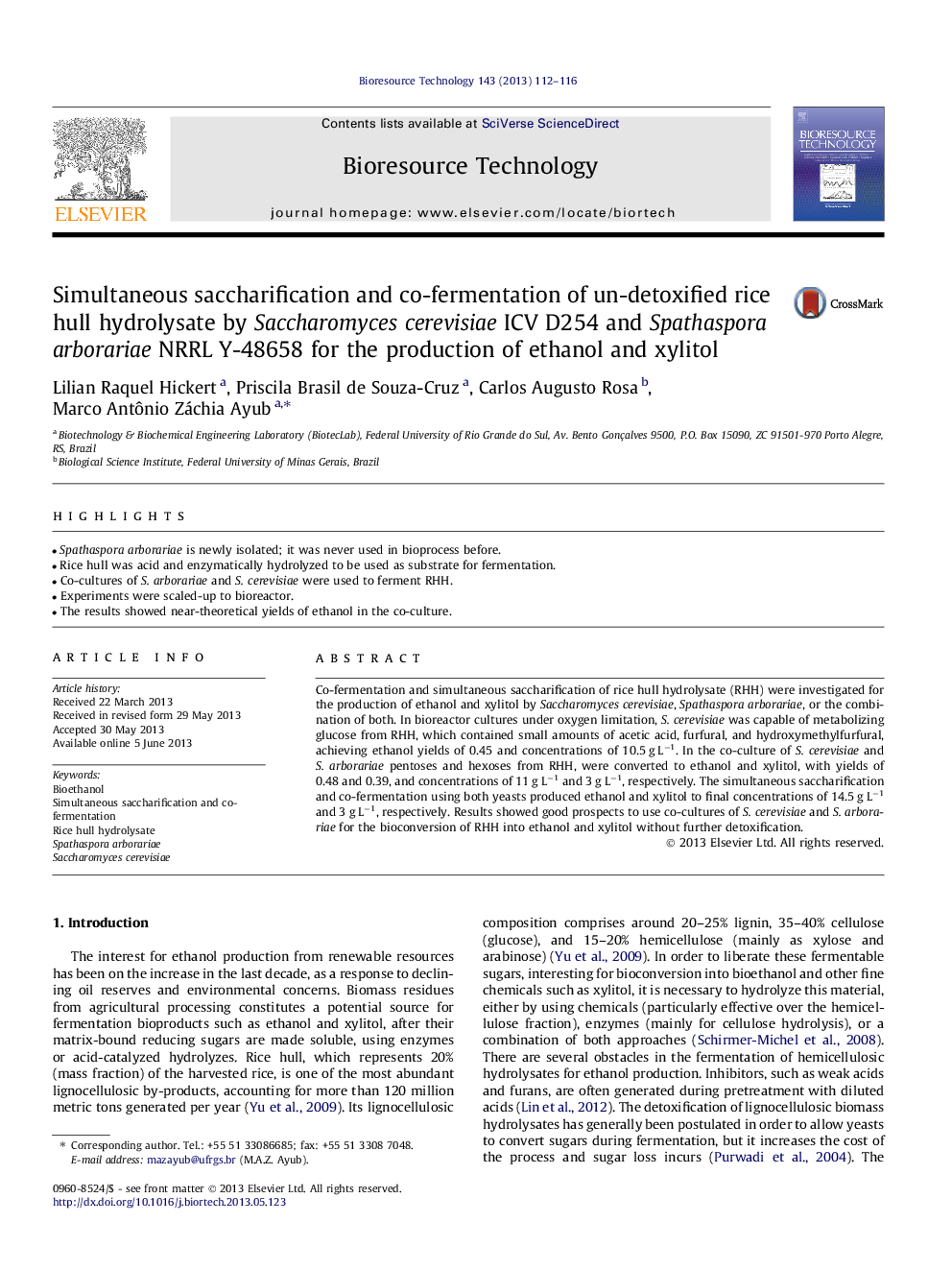| Article ID | Journal | Published Year | Pages | File Type |
|---|---|---|---|---|
| 7081529 | Bioresource Technology | 2013 | 5 Pages |
Abstract
Co-fermentation and simultaneous saccharification of rice hull hydrolysate (RHH) were investigated for the production of ethanol and xylitol by Saccharomyces cerevisiae, Spathaspora arborariae, or the combination of both. In bioreactor cultures under oxygen limitation, S. cerevisiae was capable of metabolizing glucose from RHH, which contained small amounts of acetic acid, furfural, and hydroxymethylfurfural, achieving ethanol yields of 0.45 and concentrations of 10.5 g Lâ1. In the co-culture of S. cerevisiae and S. arborariae pentoses and hexoses from RHH, were converted to ethanol and xylitol, with yields of 0.48 and 0.39, and concentrations of 11 g Lâ1 and 3 g Lâ1, respectively. The simultaneous saccharification and co-fermentation using both yeasts produced ethanol and xylitol to final concentrations of 14.5 g Lâ1 and 3 g Lâ1, respectively. Results showed good prospects to use co-cultures of S. cerevisiae and S. arborariae for the bioconversion of RHH into ethanol and xylitol without further detoxification.
Related Topics
Physical Sciences and Engineering
Chemical Engineering
Process Chemistry and Technology
Authors
Lilian Raquel Hickert, Priscila Brasil de Souza-Cruz, Carlos Augusto Rosa, Marco Antônio Záchia Ayub,
